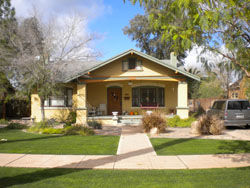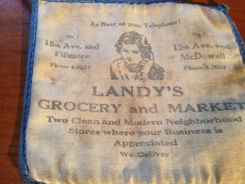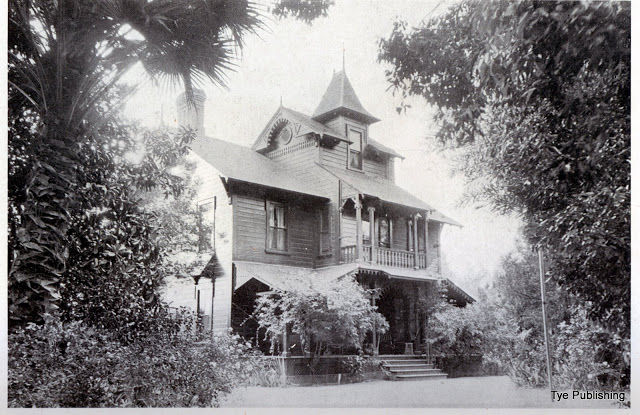Don’s stories of growing up in the Phoenix of the 1930s and 40s are full of fun times. University Park at 10th Avenue and Van Buren Street was the hub of activity, with a swimming pool, four baseball fields and tennis courts. (Encanto Park was not yet established during his early years.)
The family wouldn’t go far on its Sunday drives before they hit open desert -- an uninhabited landscape that raised doubts about the wisdom of a store so close to the city’s edge.
But the market thrived, and a small strip mall developed around it, including a drug store, restaurant. Laundromat and cleaners. The store started home delivery, catering to households in Encanto-Palmcroft and Story, of course. Each December, the store stocked Christmas trees.
Don bagged groceries, stocked shelves and marked prices. The store also drew servicemen who would get off the train along Grand Avenue and head to the store. Don remembers his dad handing out free sandwiches to the soldiers.
With Don’s passing, the family opted to sell the house, which still contains many of its original details. Don’s sister, Betty, also lived in the house from her teenage years until her death in 2011.
Betty Landy
Betty Landy, who moved with her parents into a brand-new ranch house on Lynwood Street in the early 1940s, passed away in early February, 2011.
Many Story residents will remember Betty for her walks up and down the streets of Lynwood.
Betty, 82, was born in Phoenix and spent her early years at the family home at 15th Avenue and Fillmore Street. Her parents, Lewis and Sarah, ran a grocery store called Landy’s Market. When they added a second store at the southwest corner of 15th Avenue and McDowell in the late 1930s, the family soon followed, settling into a new house in the 1300 block of West Lynwood.
Betty, then about age 12, remembered that folks thought her dad was crazy to open a business so far north: There was nothing there, she recalled in an interview.
But business flourished along with the growing neighborhoods. Landy’s Market drew customers from Story, Encanto-Palmcroft, even as far away as Phoenix Country Club. The store had neighbors of it own, developing into a mini-strip mall as Costello’s Drug Store, a variety store and a restaurant hung out their shingles.
Betty can’t remember the name of the restaurant, but recalled the food had to be good ‘because they let me eat there a lot.‘
As the market flourished, Betty’s father added a bathroom to the house to accommodate his growing brood (four boys and Betty). Kids at school marvelled at the family’s fortunes, figuring they must be rich to have two bathrooms, Betty said. She was always quick to add it was only a a half bath, but it still set the house apart.
Betty went to school at Capitol Elementary, then attended Adams Elementary for 7th and 8th grades before going to Phoenix Union for high school. Those buildings are still standing today, but only Capitol still functions as a school.
She and her siblings worked in the family store, which operated until 1984. Longtime area residents will remember Landy’s Market did home delivery; Betty remembers spending Saturday nights as a teenager, cleaning out the vegetable bins and the soda-pop area.
She taught physical education her entire career in the Coolidge school system. A gym there is named in honor of Coach Landy. While she taught southeast of the Valley, Betty still made her home in Story, sharing the house with younger brother Don.


